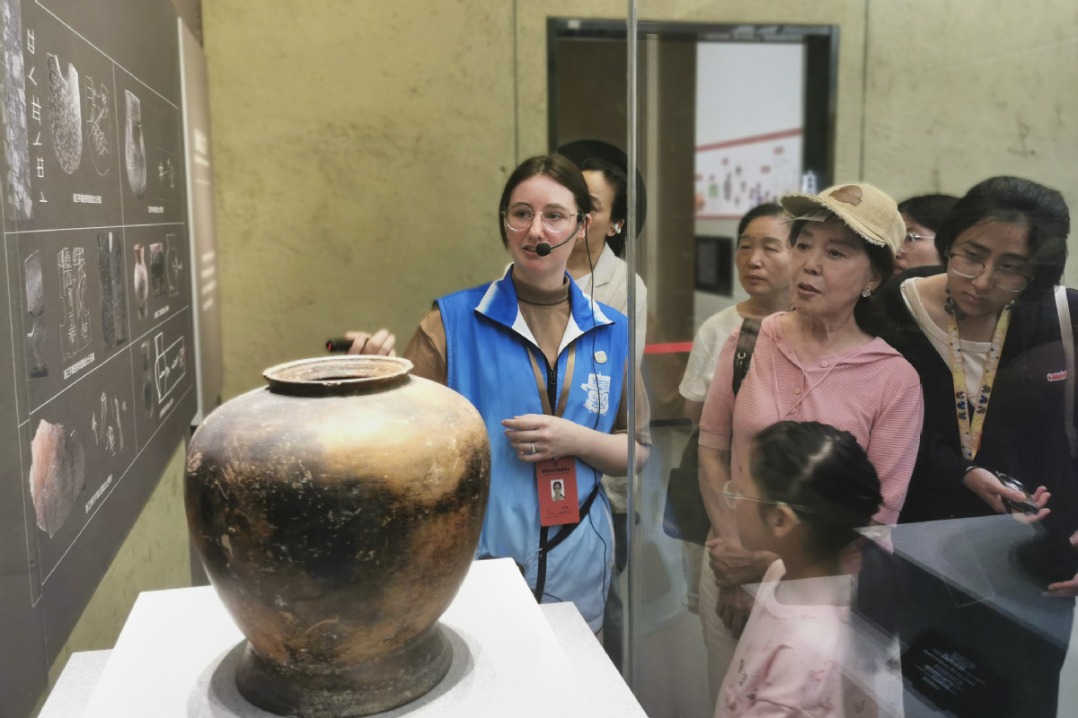Digital technologies improve healthcare in China
By Alexander Ayertey Odonkor | chinadaily.com.cn | Updated: 2023-02-28 16:54

Not long ago, a woman in her 30s diagnosed with gallstones became the first person in China to undertake the longest-distanced gallbladder removal surgery. The successful remote surgery was carried out by a doctor located more than 4,500km (2,800 miles) away from the patient. Aided by 5G technology and a four-arm laparoscopic robot, the surgeon, who was in China's eastern coastal city of Hangzhou, was able to effectively operate on the patient in a hospital located in the country's far northwest Xinjiang.
This is not the only example of a continuing transformational change, fostering uniform resource distribution across urban and rural areas, as a growing trend in China, over the last decade – in a similar arrangement carried out in July 2014, Liu Chunming, a 48-year-old man who nearly died after a car crash in Taihe, a remote county in China's southeast Jiangxi province, survived serious abdominal injuries, thanks to specialist doctors that led his treatment from 1,000km (621 miles) away. With the aid of digital technology, which supported live video feeds and software that shared the patient's scans and files, doctors in far away Hangzhou diagnosed and directed treatment for the patient, which led to his recovery.
Over the last decade, China has experienced an increased integration of digital technologies in healthcare delivery which leverages digital solutions to complement and optimize healthcare services, a steadily growing trend which accelerated sharply during the outbreak of COVID-19. On 2 February, 2020 the National Health Commission of the People's Republic of China (NHC) issued a notice that called for health authorities at all levels to strengthen the use of digital solutions to support the response to COVID-19 pandemic, in collaboration with ministers across sectors and existing service providers. The NHC's timely directive enhanced public-private partnership, enabling national and local health authorities to collaborate with private companies.
This arrangement empowered digital technology providers to lead technological innovation in healthcare delivery, providing digital solutions to mitigate the spread of the coronavirus and, concomitantly, accelerating access to adequate healthcare as the pandemic unfolded. From building information and communication technology (ICT), through aggregating and analyzing data at scale, to enhancing the availability of virtual and or artificial intelligence (AI) powered tools, these digital technology companies have provided various services that have been crucial to addressing COVID-19 during the immediate outbreak response and later in the impact mitigation stage.
For example, to mitigate the spread of coronavirus, data-driven technologies including a mobile application originally developed by an independent software developer, which aggregates data on COVID-19 cases from all-level public surveillance systems and the national transportation authorities, enabled the general public to trace if they were in close proximity with any confirmed cases in the past two weeks. The mobile application, an invaluable resource to reducing the spread of coronavirus in China, equips the general public with a pertinent digital solution to examine exposure levels and provides specific instructions on the need to practice social distancing and health monitoring as people go about their daily activities.
During this difficult period, when COVID-19 has disrupted various social and economic activities, digital technologies have been the game changer in the health sector, especially for offline medical diagnosis and treatment channels, an integral part of the health system development. Data from NHC show that COVID-19 has considerably disrupted operations of offline medical diagnosis and treatment channels. In February 2020, the total number of visits to medical and health institutions across China was 250 million (excluding Hubei Province). The COVID-19 pandemic had prompted a 38.2 percent year-on-year and 45.7 percent month-on-month drop in medical and healthcare visits. Also, the number of discharged patients in February 2020 was 10.434 million, representing a decline of 35.6 percent year-on-year and 47.7 percent month-on-month.
To address this pressing challenge and mitigate the mounting pressure on offline healthcare facilities, China has expanded online medical services, including internet hospitals, integrating the internet into healthcare, delivering online diagnosis, online consultation and treatment, follow-up treatment and health management, to advance health equity. At present, China is home to more than 1,600 internet hospitals, a vital resource in the fight against COVID-19, strengthening access to healthcare via remote healthcare services and, concurrently, limiting crowded offline meetings at physical hospitals across the country.
To highlight a few examples – During the early years of COVID-19, specifically in 2020, nearly 49 million people took online diagnosis and treatment in China and, almost to the end of last year, on 12 December, 2022, the NHC once again issued a notice to expand online medical services for COVID-19 patients – a move crucial to providing faster and more convenient medical treatment (mitigated crowds caused by offline meetings in hospitals which reduced the risk of cross-infections) as the omicron variants of COVID-19 spread rapidly.
Considering the instrumental role played by digital technologies in the fight against COVID-19 and expanding universal health coverage over the past decade, it is expected that by the end of the country's 14th Five-Year Plan (2021-2025), which includes a development plan for the medical equipment industry – China will boost integrating ICT into the medical equipment industry, creating new medical robots and digital health platforms – China will further accelerate, complement and optimize healthcare services across rural and urban areas.
Alexander Ayertey Odonkor is a global economist with keen interest in the social, environmental and economic landscape of both developing and developed countries, particularly in Asia, Africa and Europe. He is also a columnist for The Brussels Times and The Diplomat.
The opinions expressed here are those of the writer and do not necessarily represent the views of China Daily and China Daily website.
If you have a specific expertise, or would like to share your thought about our stories, then send us your writings at opinion@chinadaily.com.cn, and comment@chinadaily.com.cn.
























